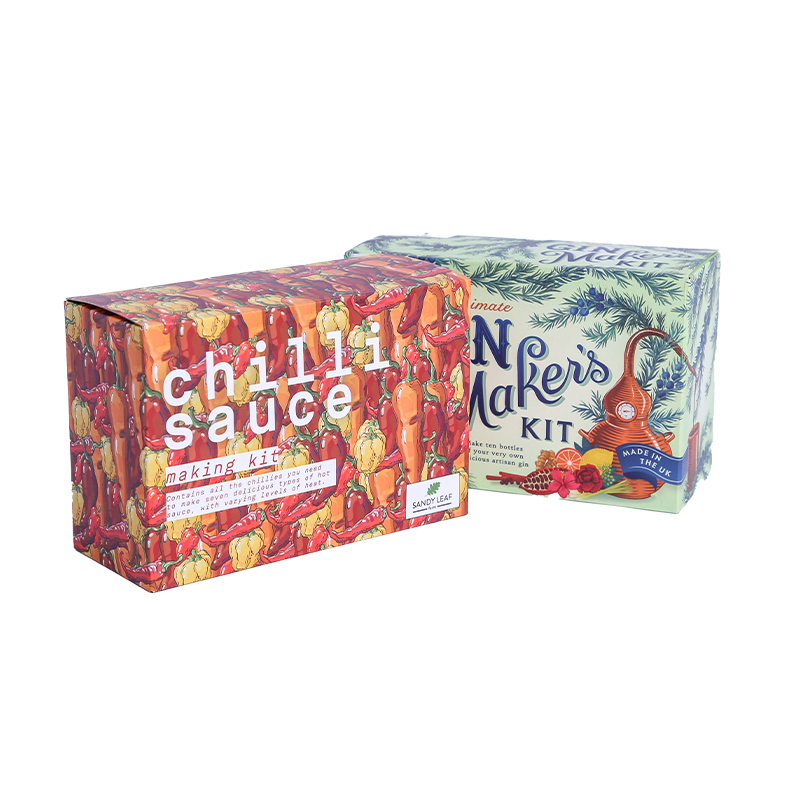-
 +86-0557-3781111 / +86-0571-56396277
+86-0557-3781111 / +86-0571-56396277
 +86-0557-3781111 / +86-0571-56396277
+86-0557-3781111 / +86-0571-56396277
The design and structure of a food packaging box play a significant role in ensuring ease of transportation and storage in the supply chain by enhancing both efficiency and cost-effectiveness. Several factors contribute to this:
1. Shape and Size Optimization:
Standardization of Dimensions: Designing food packaging boxes to fit standardized sizes (such as 12x12x12 inches) helps maximize storage space, whether in storage facilities or transportation vehicles. This ensures that space is used efficiently, reducing wasted space and lowering transportation costs.
Stackability: A well-designed box should be easily stackable without risking damage to the contents. The box's design, including its structural integrity, ensures that multiple boxes can be stacked safely on top of each other, minimizing the space needed for storage and preventing shifts during transit.
2. Strength and Durability:
Material Selection: The choice of materials for food packaging boxes (e.g., corrugated cardboard, paperboard, or plastic) directly impacts their ability to withstand the rigors of transportation. Strong, durable materials prevent the boxes from collapsing, tearing, or being crushed under pressure. This ensures that the boxes can endure stacking and movement without compromising the product inside.
Reinforced Edges and Corners: Reinforced edges or additional structural elements like internal partitions provide extra strength, preventing structural failure during handling and transport. These reinforcements are critical for fragile or perishable food items.
3. Lightweight Design:
Minimizing Weight: Packaging boxes that are lightweight without sacrificing strength contribute to reducing overall shipping costs. By minimizing the weight of the packaging, companies can maximize the amount of product they can ship within weight limits, making transportation more cost-effective.
4. Space-Efficient Designs:
Efficient Packaging Layouts: The internal structure and design of food packaging boxes should facilitate efficient packing. For example, boxes that can hold multiple layers of products without excessive padding or air space are ideal for reducing the volume and weight during transportation and storage.
Nested Designs: Boxes designed with collapsible features allow them to be nested and compacted when not in use. This feature helps save space in warehouses and when empty boxes need to be returned or stored for reuse.

5. Protective Features:
Barrier Layers and Protective Coatings: Some food packaging boxes are designed with moisture barriers, grease-resistant coatings, or insulation to protect food during transit. This is particularly important for temperature-sensitive or perishable products, as it helps maintain quality while reducing spoilage during storage and transport.
Tamper-Evident or Sealing Features: Seals or tamper-proof designs add an extra layer of protection to ensure that the product is safe during transit, preventing contamination or unauthorized access.
6. Stacking and Palletizing:
Compatibility with Palletization Systems: Food packaging boxes designed to fit perfectly on pallets improve efficiency in warehouse handling and storage. Palletized boxes can be easily moved using forklifts or automated systems, allowing for faster loading and unloading. Proper box design ensures the load is stable and minimizes the risk of damage during handling.
Ease of Labeling and Barcoding: Clear areas for labeling and barcoding can make tracking easier and streamline warehouse operations. This allows for quick identification, better inventory management, and more efficient stock rotation, especially for food products with a limited shelf life.
7. Easy Opening and Handling:
Convenience for Workers: Easy-to-open packaging designs, such as tear strips, perforated openings, or tabs, help speed up the unpacking process during distribution or at retail points. This reduces labor time and enhances overall efficiency in the supply chain.
Handling Features: Packaging with convenient handles or grips can help improve the ease with which workers can move and handle the boxes, reducing the chance of injury and increasing operational efficiency.
8. Environmental Considerations:
Sustainability: Packaging that is environmentally friendly (e.g., recyclable, biodegradable, or made from renewable resources) is becoming increasingly important. Not only does this reduce the environmental impact of packaging materials, but it also helps improve consumer perceptions and compliance with regulations regarding waste management.
Annhiu Address: Yishan Road and Qingshengou Road Intersection, Suzhou Economic Development Zone, Anhui, China
Tel: +86-0557-3781111
E-mail: [email protected]
Hangzhou Address: Building 3, No.286, Renliang Road, Renhe Street, Yuhang District, Hangzhou, Zhejiang, China
Tel: +86-0571-56396277
E-mail: [email protected]
Copyright © Hangzhou Shengpin Packaging Co., Ltd. All Rights Reserved.
